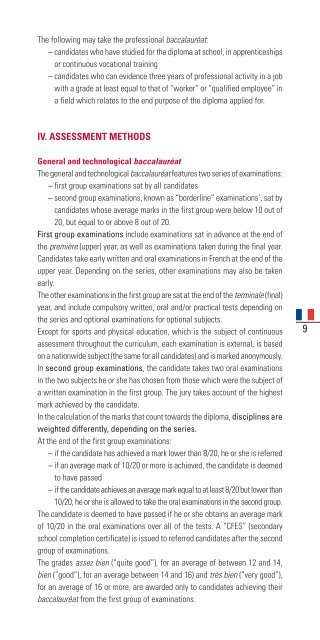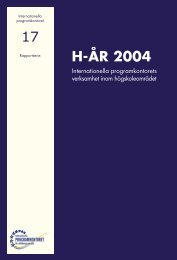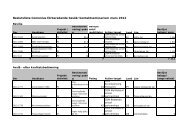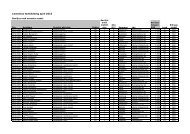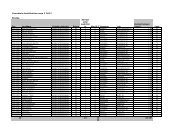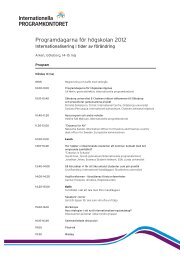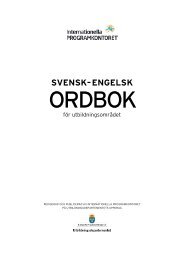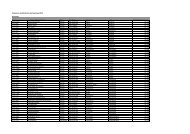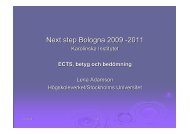Baccalauréat, A-levels, Abitur, Bachillerato
Baccalauréat, A-levels, Abitur, Bachillerato
Baccalauréat, A-levels, Abitur, Bachillerato
You also want an ePaper? Increase the reach of your titles
YUMPU automatically turns print PDFs into web optimized ePapers that Google loves.
The following may take the professional baccalauréat:<br />
– candidates who have studied for the diploma at school, in apprenticeships<br />
or continuous vocational training<br />
– candidates who can evidence three years of professional activity in a job<br />
with a grade at least equal to that of “worker” or “qualified employee” in<br />
a field which relates to the end purpose of the diploma applied for.<br />
IV. ASSESSMENT METHODS<br />
General and technological baccalauréat<br />
The general and technological baccalauréat features two series of examinations:<br />
– first group examinations sat by all candidates<br />
– second group examinations, known as “borderline” examinations’, sat by<br />
candidates whose average marks in the first group were below 10 out of<br />
20, but equal to or above 8 out of 20.<br />
First group examinations include examinations sat in advance at the end of<br />
the première (upper) year, as well as examinations taken during the final year.<br />
Candidates take early written and oral examinations in French at the end of the<br />
upper year. Depending on the series, other examinations may also be taken<br />
early.<br />
The other examinations in the first group are sat at the end of the terminale (final)<br />
year, and include compulsory written, oral and/or practical tests depending on<br />
the series and optional examinations for optional subjects.<br />
Except for sports and physical education, which is the subject of continuous<br />
assessment throughout the curriculum, each examination is external, is based<br />
on a nationwide subject (the same for all candidates) and is marked anonymously.<br />
In second group examinations, the candidate takes two oral examinations<br />
in the two subjects he or she has chosen from those which were the subject of<br />
a written examination in the first group. The jury takes account of the highest<br />
mark achieved by the candidate.<br />
In the calculation of the marks that count towards the diploma, disciplines are<br />
weighted differently, depending on the series.<br />
At the end of the first group examinations:<br />
– if the candidate has achieved a mark lower than 8/20, he or she is referred<br />
– if an average mark of 10/20 or more is achieved, the candidate is deemed<br />
to have passed<br />
– if the candidate achieves an average mark equal to at least 8/20 but lower than<br />
10/20, he or she is allowed to take the oral examinations in the second group.<br />
The candidate is deemed to have passed if he or she obtains an average mark<br />
of 10/20 in the oral examinations over all of the tests. A “CFES” (secondary<br />
school completion certificate) is issued to referred candidates after the second<br />
group of examinations.<br />
The grades assez bien (“quite good”), for an average of between 12 and 14,<br />
bien (“good”), for an average between 14 and 16) and très bien (“very good”),<br />
for an average of 16 or more, are awarded only to candidates achieving their<br />
baccalauréat from the first group of examinations.<br />
9


